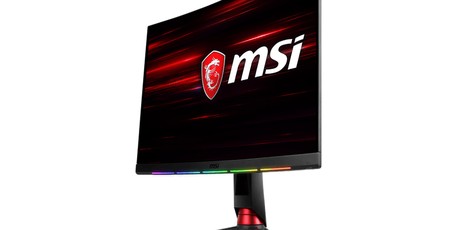
Manufacturer: MSI
UK price (as reviewed): £526.64 (inc. VAT)
US price (as reviewed): $539.99 (exc. tax)
This is a review we’ve been looking forward to for a while, ever since we first saw the monitor demoed at an MSI press event. The Optix MPG27CQ is a screen with serious gaming credentials, sporting as it does a curved 27” panel with a 2,560 x 1,440 resolution (1440p) and a 144Hz refresh rate with support for AMD FreeSync. It also boasts a claimed 1ms response time, a VA panel with a wider than usual colour gamut, and even RGB lighting – if you thought monitors were safe from that particular trend, think again.
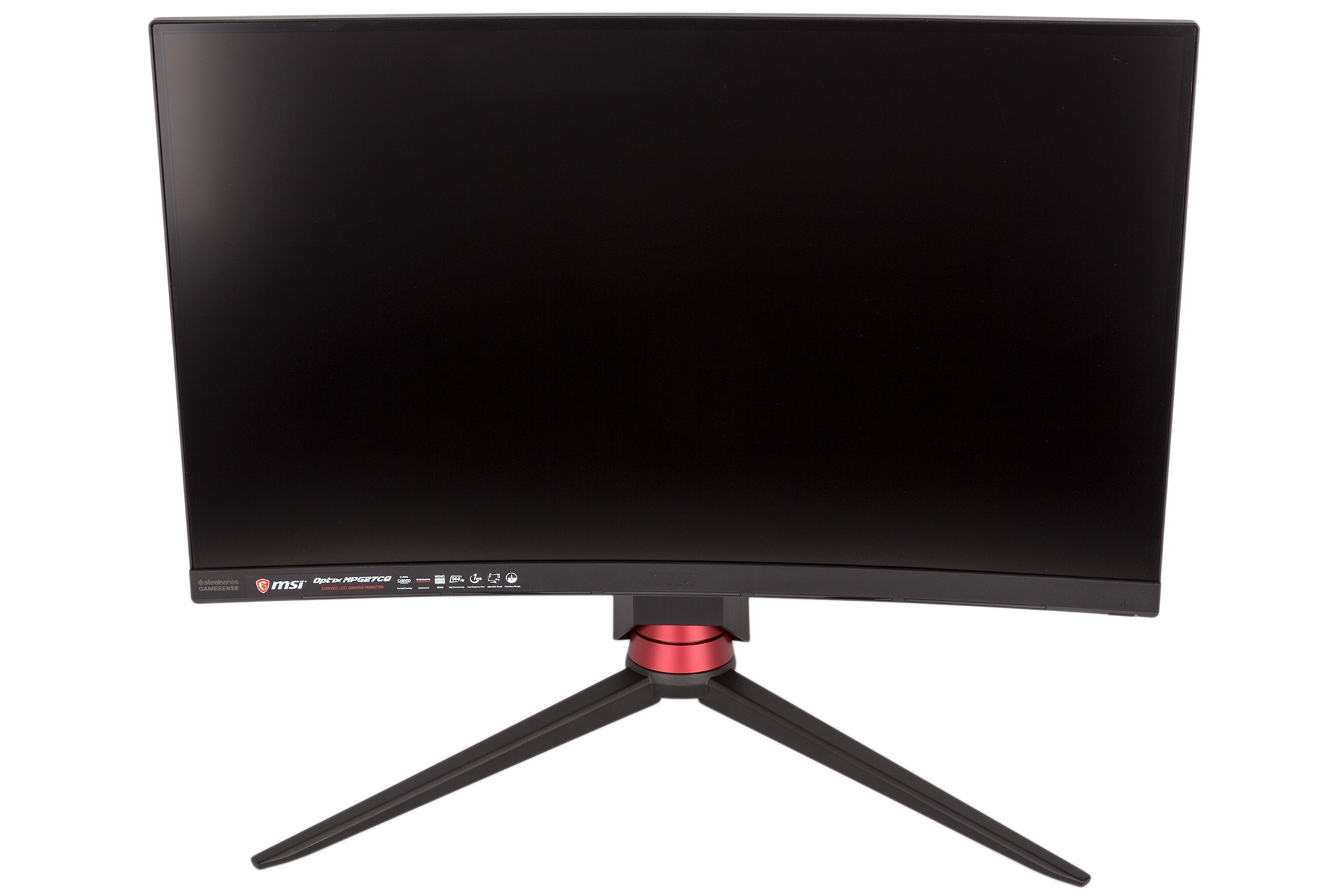
Although 1440p could well be a resolution that many people skip, it’s actually a great fit for the 27” form factor. We’ve seen 28” 4K screens, for example, and unless your eyesight is exceptional, you’ll probably have to introduce scaling for desktop apps. Meanwhile, 1080p at this size tends to disappoint on the pixel density front. 1440p also strikes us as a great resolution for gaming; 4K is a serious challenge even for today’s fastest GPUs running the latest games, whereas 1440p reduces the strain significantly while still providing a clear increase in sharpness over a 1080p panel. That said, MSI does also offer this monitor at the same size with a 1080p resolution instead – the price in that instance drops from £519 to £449.
The stated specifications of the VA panel are promising: A 1ms response time is joined by a 3,000:1 contrast ratio and 100 percent coverage of the NTSC colour spectrum, which is 15 percent wider than sRGB but, importantly, does not qualify this screen as a true wide-gamut model. It is also not HDR-compliant.
The MPG27CQ sports a subtle 1800R curvature rate; head-on, it’s quite difficult to notice at times, but there is an added sense of immersion. It’s hard to pass a real judgement on, as it’s something you need to see for yourself to work out if you like it or not, but it certainly didn’t take us long to get used to. The anti-glare coating is definitely effective, though, soaking up distracting reflections from dark areas, and while it’s not bezel-free, the outer plastic on the sides and top is extremely thin, and then there’s a very small in-panel border as well. Having two or three next to each other looks pretty great (this was demoed to us at the event), and the curvature here helps to remove the awkward angles you get from typical multi-monitor setups.
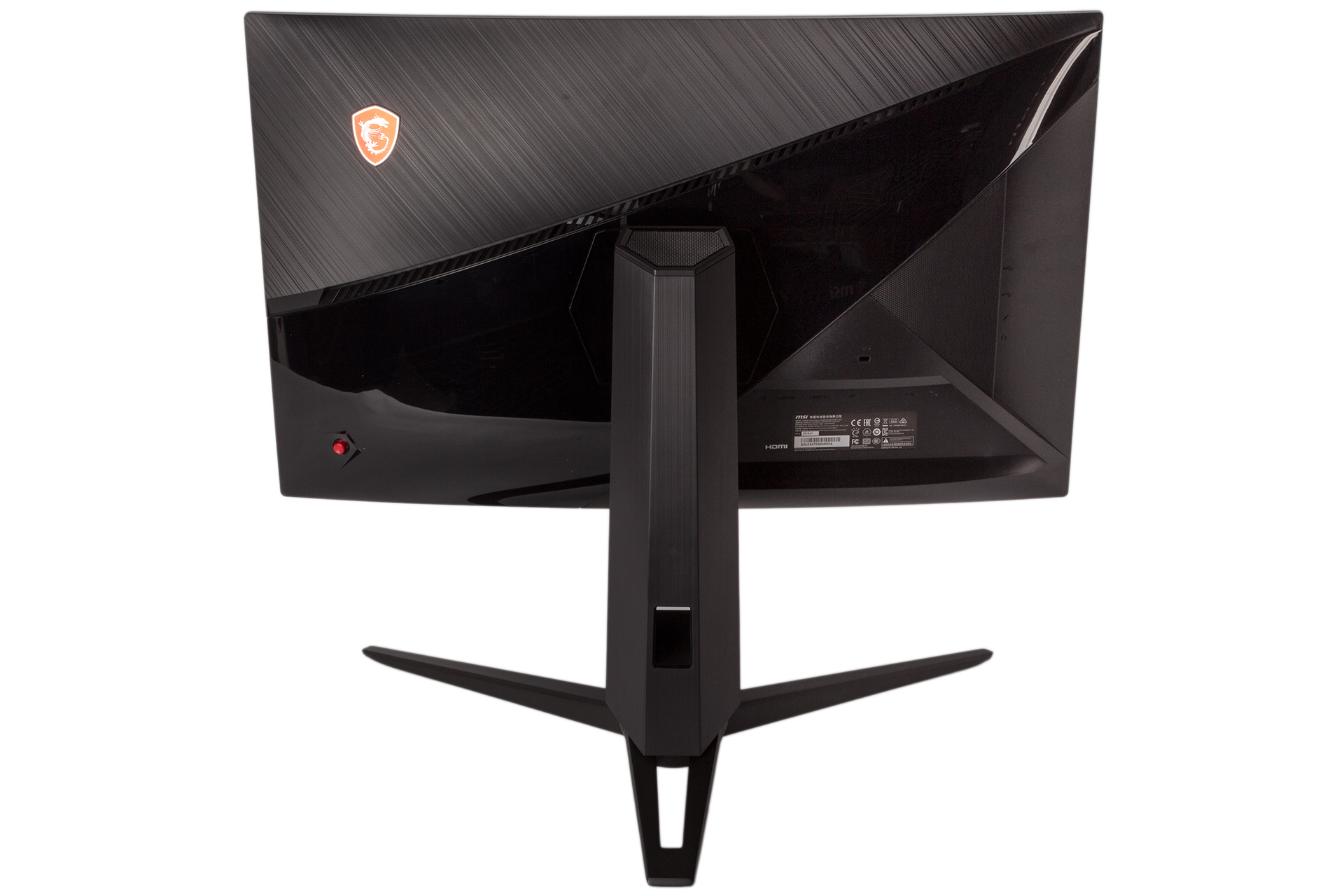
Build quality overall is robust. The screen comes in three parts – a rock solid, metal tripod base, a plastic-covered stand, and the display itself, although you obviously forgo the first two if you choose to utilise the VESA 100 x 100 mount. Assembly takes less than a minute, and the MPG27CQ offers users tilt adjustment from -5° to 20°, 40° of swivel left and right, and height adjustment of up to 120mm. Making any adjustment is very easy, too. The only one missing here is pivot, but a curved monitor in portrait mode would be very odd indeed. One criticism of the construction, though, is that the bottom tripod has a huge footprint, covering 380mm of depth, which on most desks won’t leave you much room for your keyboard.
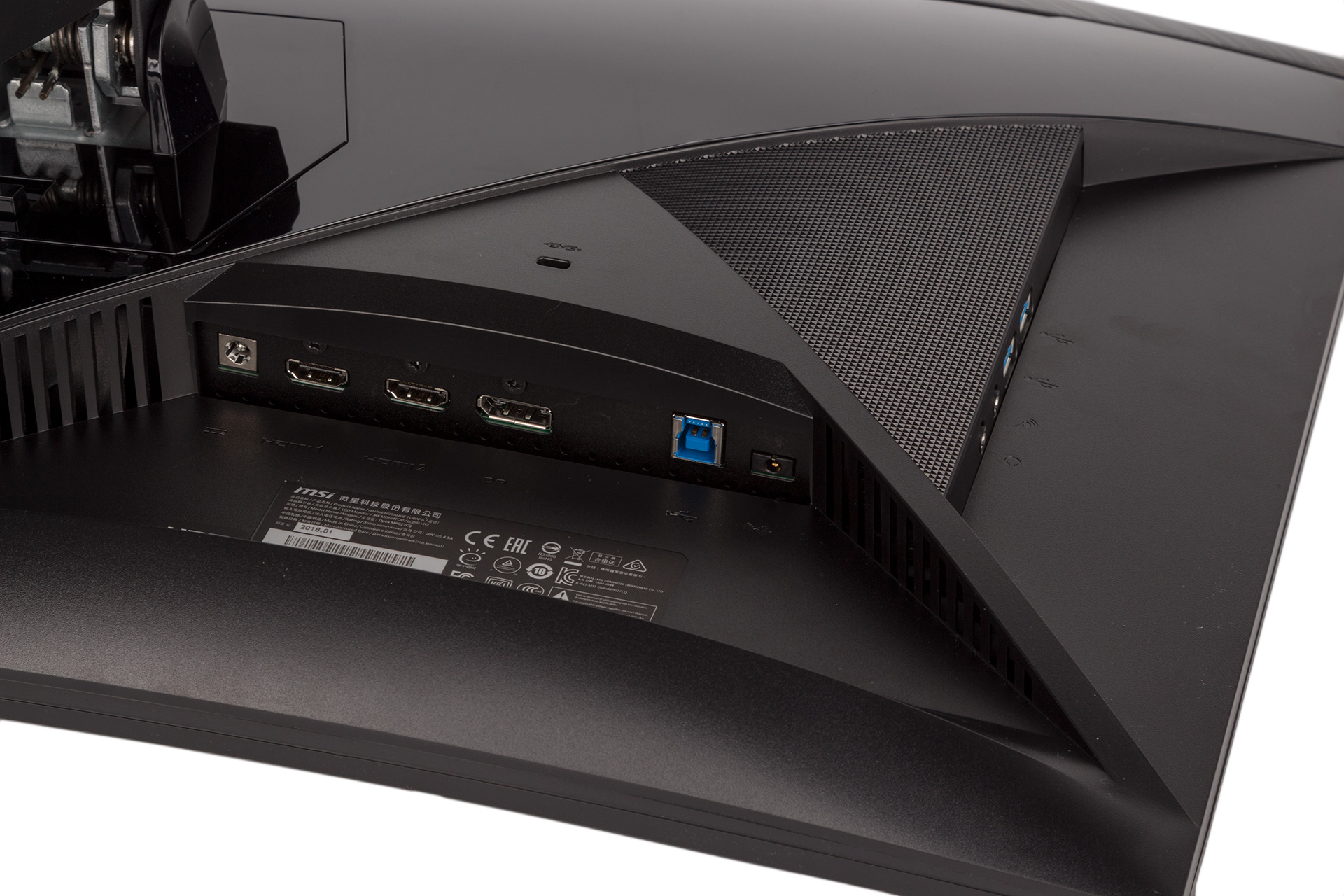
The majority of ports are down-facing, including dual HDMI 2.0 and a single DisplayPort 1.2 connector. Both types support 144Hz at the native resolution, and both support AMD FreeSync between 48 and 144Hz. This is a nice, wide range, but sadly support for Low Framerate Compensation is not included. Update 18/05/2018: We had a miscommunication with MSI, and it has now been in touch to confirm that LFC is indeed supported. It is also looking to get an entry for this monitor placed into AMD's otherwise comprehensive list of FreeSync monitors. Next to these ports is a USB 3.0 Type-B connector, which connects to your PC and powers the two side-facing Type-A ports as well as allowing you to control the RGB lighting – more on that soon.
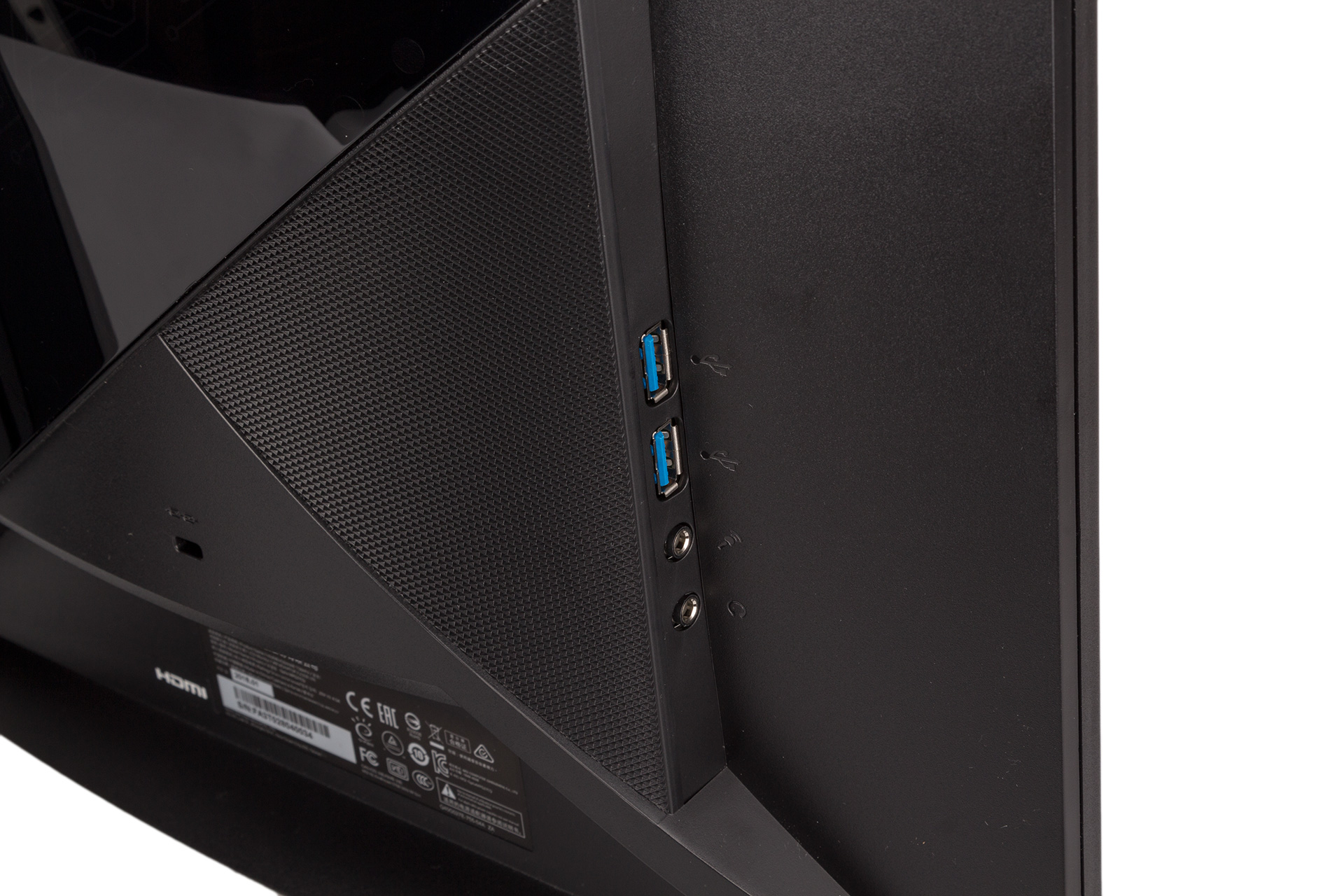
You also get a combined mic in/line out 3.5mm audio jack as well as separate jacks that are side-facing next to the USB ports. This allows you to leave your speakers connected to the down-facing combined jack while also letting you easily connect and disconnect your headset as necessary at the side. There are no speakers on the monitor, but these are always rubbish, so that’s no big loss.
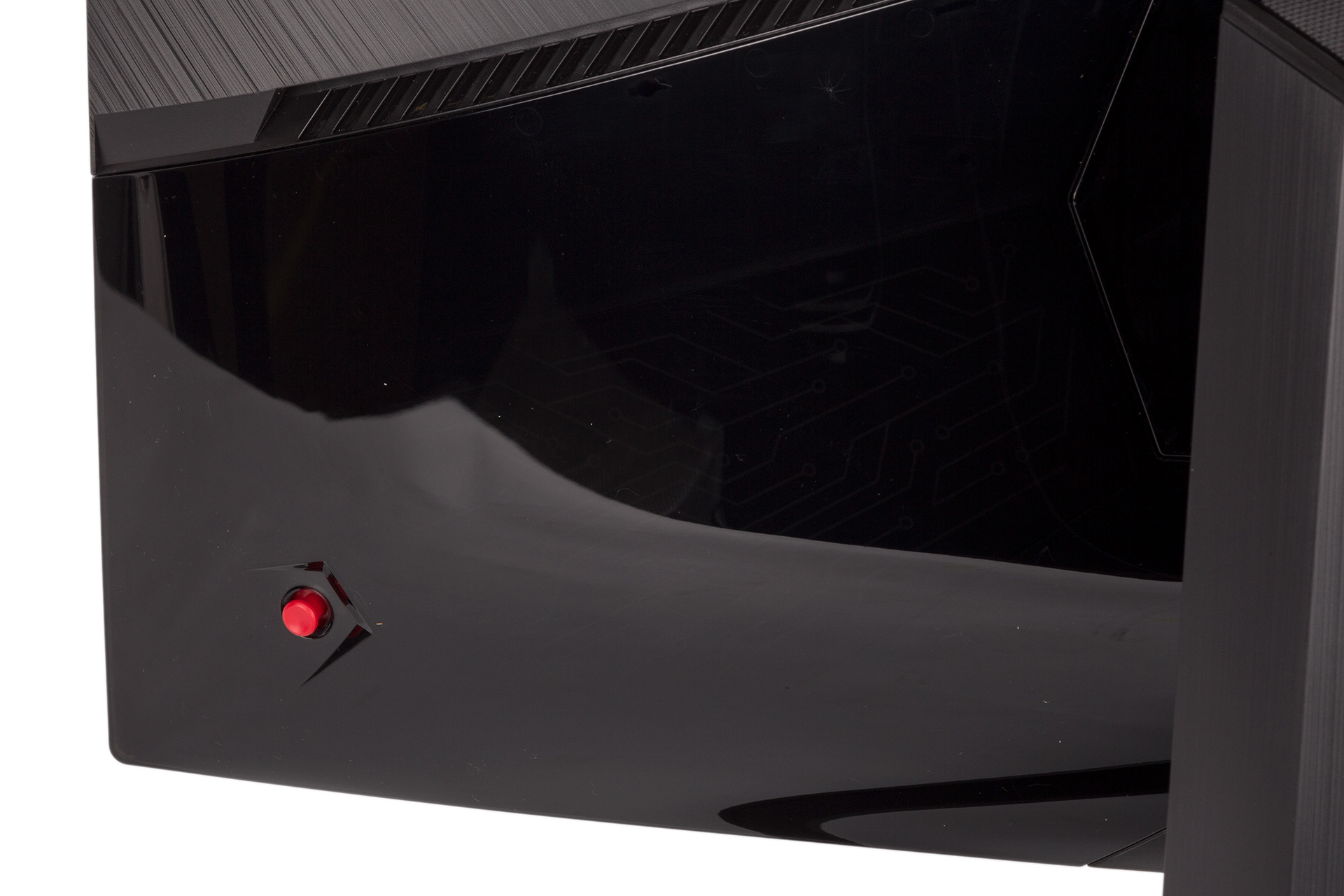
There is a five-way joystick on the rear that’s used to control the menu and access settings. It’s a feature found elsewhere, but it is intuitive and also neatly hidden, removing the need for multiple buttons along the bottom edge. The menu is easy to navigate as a result, and you’re able to specify what a quick flick of the joystick in one direction is a shortcut for. There are no settings we haven’t seen elsewhere – you get dedicated black tuning for increasing visibility of shadows, anti-motion blur (disabled when FreeSync is used), a low blue light option, and a small selection of game-themed colour/image presets, which go too far in one direction or another and can safely be ignored. If you prefer navigating with a mouse, the USB connection to this monitor means you can also control settings via a separate desktop app.
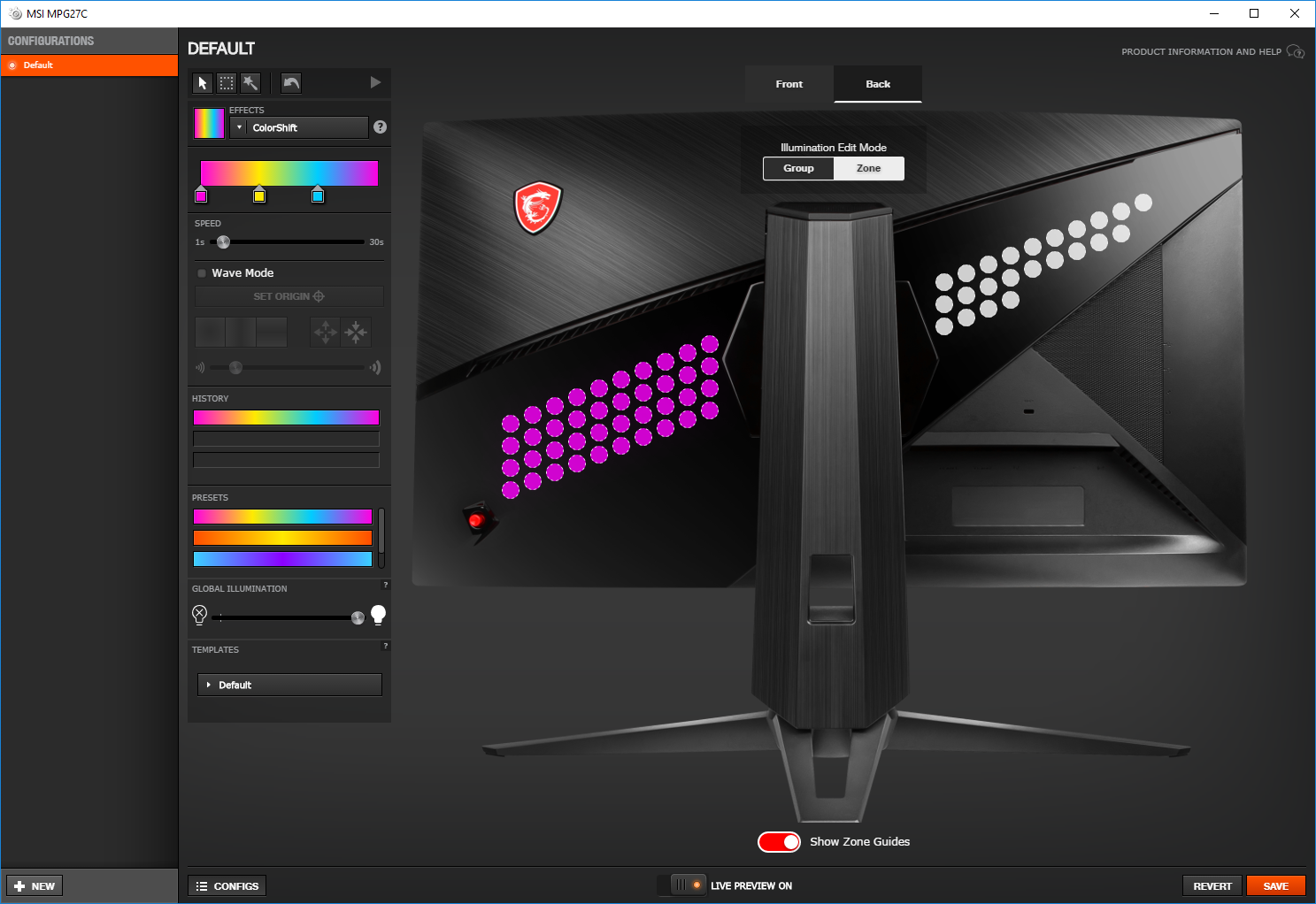
So, all that’s left to discuss is the RGB lighting. This takes the form of five visible bars along the bottom edge, each lit by eight independent LEDs. There is also a patterned effect on the rear of the screen. In our opinion, these look pretty good rather than garish, and they’re deliberately angled downwards to prevent interference with the display and to avoid shining too directly into your eye. They are are not just for visual effect either; with the USB cable connected, the MSI MPG27CQ becomes compatible with SteelSeries GameSense technology and the associated Engine control software, allowing games like Counter-Strike: Global Offensive and Dota 2 (as well as apps, most notably Discord) to use the lighting to visually represent statistics like health, headshot count, ammo, etc. We used this with CS:GO, and it worked a treat – easy to setup and did what it said on the tin. However, we also noted that we barely registered the presence of the lights in gameplay, having to deliberately flick our eyes towards them to take note, in which case you’d probably just look at the in-game HUD. As such, it may be better suited to displaying off-screen things like notifications for Discord. In short, it’s nifty but not a game-changer, especially as SteelSeries’ list of GameSense-supported apps is still pretty small.
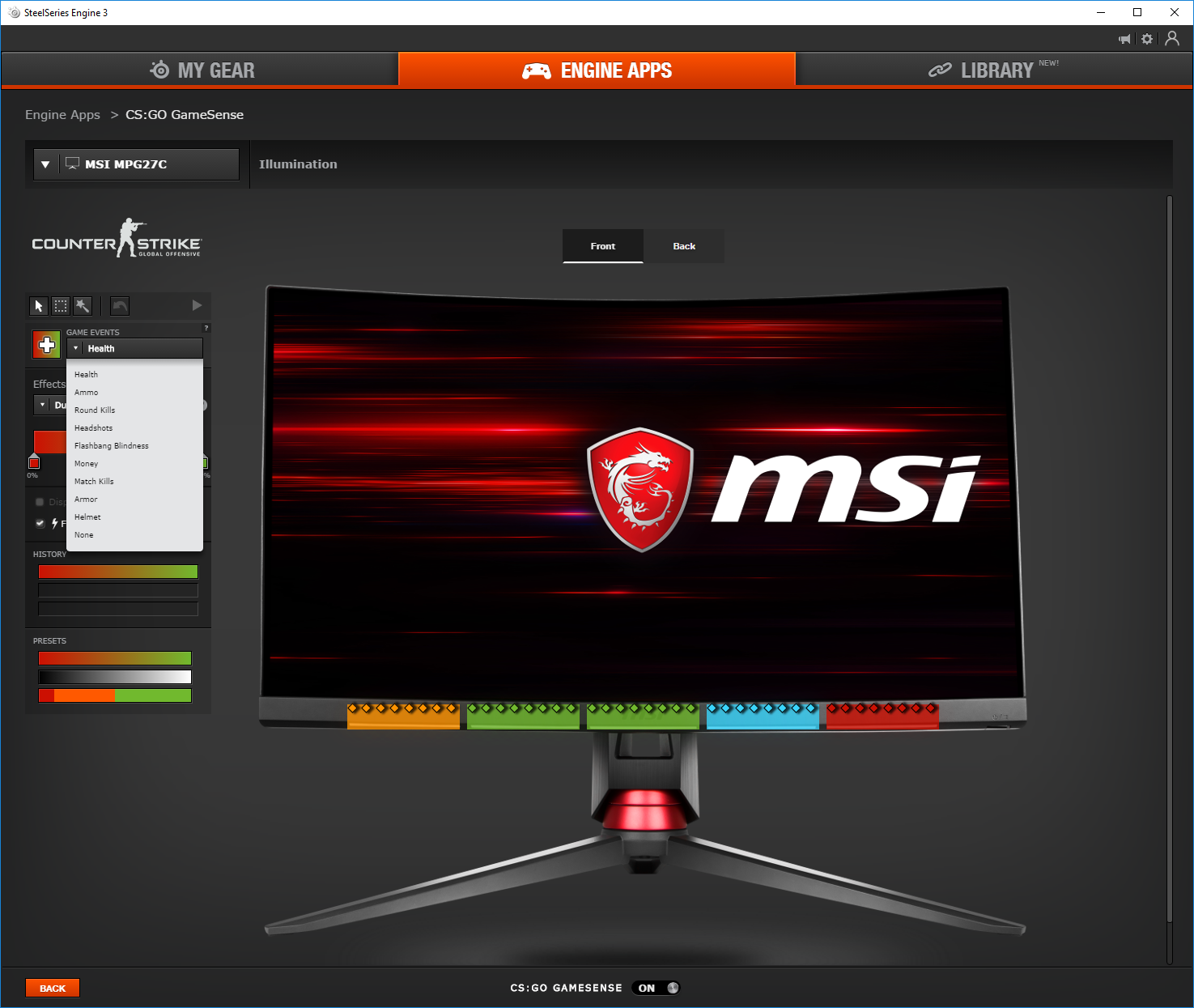
Specifications
- Screen size 27"
- Panel technology VA
- Resolution 2,560 x 1,440
- Aspect ratio 16:9
- Maximum refresh rate 144Hz
- Variable refresh rate Yes (FreeSync)
- Brightness 400cd/m2
- Contrast ratio 3,000:1
- Response time 1ms
- Connectors 1 x DisplayPort 1.2, 2 x HDMI 2.0, 1 x 3.5mm combined line-out/mic-in, 1 x 3.5mm headphones, 1 x 3.5mm mic
- USB 2 x USB 3.0
- VESA wall-mount Yes, 100 x 100
- Adjustments Height, swivel, tilt
- Speakers No

MSI MPG Velox 100R Chassis Review
October 14 2021 | 15:04

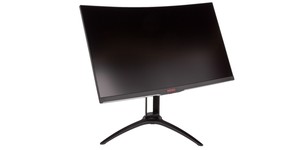
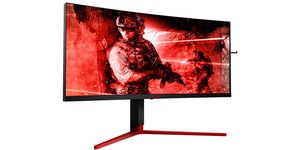
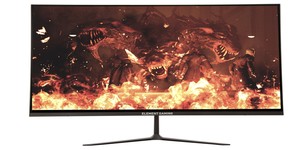




Want to comment? Please log in.